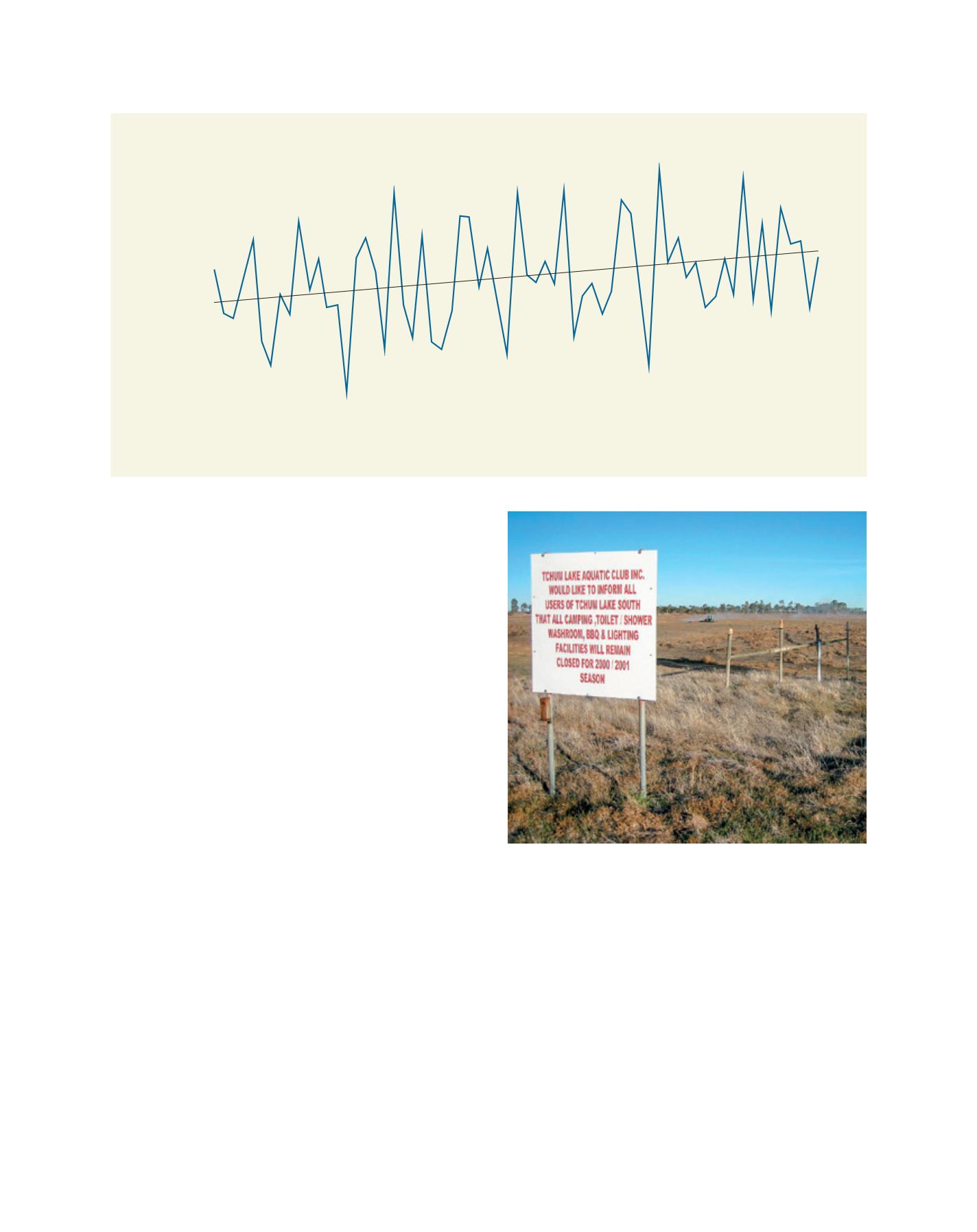

[
] 154
rainfall deficits during the millennium drought is the domi-
nance of high pressure. This suggests that the drought should
be considered, at least partly, as a shift to a more arid climate
rather than just an episodic drought event following which
conditions will return to the historical norm.
Even though the millennium drought is popularly consid-
ered to have ended during the 2010-2012 La Niña sequence,
there has been little recovery of cool season rainfall across
southern Australia. The period from late 2010 to early 2012
saw nearly continuous La Niña conditions in the Pacific result-
ing in the wettest two-year period on record for Australia.
However, the heavy rainfall was confined to the summer half
of the year, reinforcing the multi-decadal pattern of increas-
ing tropical (summer) rainfall in northern parts and poor cool
season rainfall in the south. With the return to near El Niño
conditions in 2014 and a subsequent El Niño in 2015, rainfall
patterns in southern areas and parts of eastern Australia have
returned to a situation similar to that which occurred during
the millennium drought. Preliminary data suggests that pres-
sure over southern Australia is likely to be above average in
2015, indicative that the background trend continues.
It remains to be seen whether the emerging impacts become
as severe as those felt during the millennium drought. Detailed
climate change projections for Australia show that contin-
ued rainfall declines are likely in the cool season in southern
Australia, and it is very unlikely that these will be offset by
summer rainfall increases. These changes will interact with
natural drought cycles and may be expected to give rise to
conditions beyond earlier experience.
Climate science and continued weather observations high-
light that recent dry periods across southern Australia are
more accurately characterized as a shift to an increasingly
dry climate (increasing aridity), rather than simply episodic
drought events. The poleward extension of the subtropical
dry zones and contraction of the westerlies is one anticipated
impact of a warming climate under the enhanced greenhouse
effect with ozone depletion enhancing this shift. These anthro-
pogenic drivers provide a causal mechanism for the changes
in pressure and rainfall in Australia’s south which continue.
While natural rainfall variability in Australia remains large,
and rainfall continues to be strongly influenced by the El
Niño Southern Oscillation, it is likely that the drying across
southern Australia in recent decades cannot be explained
by natural variability alone. When combined with increas-
ing temperatures and heightened demands for water, it is
imperative that managing for drought must look beyond the
past as a guide, and towards understanding the interaction
between climate variability and change to better inform deci-
sions for the future.
Cool season (April-October) mean sea level pressure near southern Australia showing an increase since 1950
Source: Pressure observations taken from National Centers for Environmental Prediction/National Center for Atmospheric Research reanalyses
Southern Australian Pressure (hPa)
1950
1015
1016
1017
1018
1019
1020
1955 1960 1965 1970 1975 1980
1985
1990 1995 2000 2005 2010
A dry lake bed (Tchum Lake) in the Mallee region of Victoria at the peak of the
hydrological drought
Image: Australian Bureau of Meteorology
L
iving
L
and
















